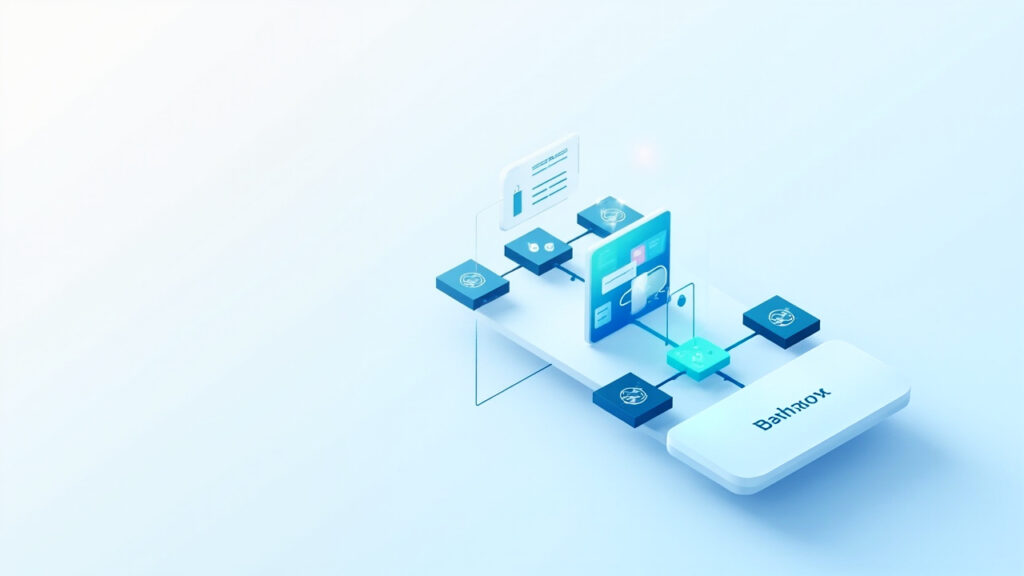In the rapidly evolving world of software development, the importance of robust software testing cannot be overstated. As applications become more complex and integral to our daily lives, the stakes for ensuring their reliability and performance have never been higher. However, traditional testing methodologies often fall short in keeping pace with the demands of modern software development cycles. This blog post will explore the challenges faced in conventional software testing and introduce well-structured methods that are transforming the landscape. By the end of this article, you will gain comprehensive insights into advanced software testing techniques and understand how tools like GenQE can significantly enhance these processes.
Software testing is an essential phase in the software development lifecycle, tasked with identifying and fixing bugs before the software reaches end-users. Historically, this process has been predominantly manual, which not only consumes considerable time and resources but also introduces human error. As technologies advance, the limitation of these traditional methods becomes more apparent—prompting the need for more efficient, accurate, and scalable solutions.
This article delves deep into the evolution of software testing methods, from manual testing to automated and AI-driven approaches. We will explore each method’s intricacies and how integrating cutting-edge tools like GenQE can address common pain points such as efficiency, coverage, and maintenance overhead. Whether you are a software developer, a QA professional, or simply someone interested in the latest in tech innovation, this exploration will equip you with the knowledge to appreciate and possibly implement these advanced testing methodologies.
The Foundation of Software Testing

Understanding the core principles and traditional methods of software testing is crucial before delving into more advanced techniques. This section will cover the basics of software testing, including its importance, common types, and the typical challenges testers face.
Why is Software Testing Important?
Software testing serves multiple critical functions in the development process. It ensures that the software performs as expected, meets the required safety standards, and provides a user-friendly experience. In essence, testing is about identifying defects that could potentially lead to software failures, thus preventing costly and potentially dangerous errors before software deployment.
Traditional Testing Techniques
Manual testing involves testers writing test cases and manually executing them to find inconsistencies or bugs in the software. While this method allows for nuanced understanding and user-like interaction, it is inherently slow, laborious, and prone to human error. Automation introduced scripts that could be run repeatedly, speeding up the process but still requiring significant maintenance with every change to the source code.
Challenges in Traditional Methods
- **Scalability Issues**: Manual testing does not scale well with the project size. As applications grow, so does the testing burden.
- **High Costs and Time Consumption**: Extensive manual testing requires more resources and time, which can delay the overall development process.
- **Error-Prone**: Human testers can overlook issues or make errors, especially with repetitive tasks.
Advancements in Automated Testing

Transitioning from manual to automated testing has been a significant shift in the software testing domain. This section explores how automation has changed the landscape and the benefits it brings to the table.
Introduction to Automated Testing
Automated testing uses software tools to run tests automatically, manage test data, and utilize results to improve software quality. Tools like Selenium and TestComplete are popular for implementing automated test scripts that execute repetitive tasks without human intervention.
Benefits of Automated Testing
- **Efficiency**: Tests can be run quickly and frequently, which is crucial for continuous integration and delivery.
- **Consistency**: Automated tests perform the same steps precisely every time they are executed.
- **Cost-Effective in the Long Run**: Although initial setup costs can be high, automated testing saves money by significantly reducing the time to run repeated tests.
Limitations of Pure Automation
Despite its advantages, automated testing isn’t a panacea. It can be challenging to set up, maintain, and can’t handle complex test scenarios that require human judgment.
Role of AI in Enhancing Automated Testing

Artificial Intelligence (AI) in software testing is a game-changer, addressing many limitations of both manual and purely automated approaches. This section discusses how AI can transform testing processes by making them smarter and more adaptive.
AI-Driven Test Case Generation
One of the most time-consuming aspects of testing is creating comprehensive test cases. AI can automate this process by analyzing application data and user interactions to generate relevant test cases, thus enhancing test coverage and efficiency.
Predictive Analytics in Testing
AI algorithms can predict potential problem areas in the software based on historical data, focusing testing efforts where they are most needed and likely to find significant issues.
Real-World Application and Benefits of AI in Testing
Companies that have integrated AI into their testing processes report reduced testing times, lower costs due to less manual effort, and improved software quality.
Introducing GenQE: A Tool for the Future

While discussing advancements in AI-driven testing, it’s pertinent to highlight tools like GenQE that significantly bolster these technologies. GenQE stands out by providing AI-driven test generation, smart test execution, and self-healing automation capabilities.
GenQE’s Approach to Automated Testing
GenQE leverages AI to enhance test automation by:
- **Automating Test Case Design**: Reducing dependency on manual input and increasing test coverage.
- **Intelligent Test Execution**: Prioritizing test cases based on risk and potential impact.
- **Self-Healing Capabilities**: Automatically adjusting test scripts when application changes occur, thus reducing maintenance.
Practical Benefits of Using GenQE
Organizations using GenQE can expect:
- Faster time to market due to streamlined test processes.
- Higher accuracy and reduced human error.
- Significant cost savings from reduced manual effort and faster defect detection.
Comprehensive Testing Strategies for Modern Applications

To effectively apply these advanced testing methods, it’s essential to develop a strategy that incorporates traditional, automated, and AI-driven testing based on the application’s needs.
Designing an Effective Testing Strategy
- **Assessment of Needs**: Understand the specific requirements and challenges of your software project.
- **Integration of Suitable Tools**: Choose tools like GenQE that fit the project’s complexity and help meet testing objectives.
- **Continuous Evaluation**: Regularly assess the testing strategy’s effectiveness and make necessary adjustments.
Case Studies
Several high-profile companies have successfully integrated AI-driven testing tools into their development cycles, resulting in improved efficiency and software quality. These case studies serve as powerful testimonials to the potential of advanced testing methodologies.
Conclusion: Embracing the Future of Software Testing

The landscape of software testing is continuously evolving, with AI and automation at the forefront of this transformation. By understanding and integrating advanced testing methods and tools like GenQE, organizations can significantly enhance their testing efficiency, accuracy, and overall software quality.
As we look to the future, the integration of AI in software testing seems not only beneficial but essential for handling increasingly complex software projects. Those interested in staying ahead in the field should consider exploring these technologies further.
For those keen on enhancing their testing processes and embracing these innovative solutions, exploring tools like GenQE could be your next step towards more efficient and reliable software development.
Discover More Innovative Solutions
Want to learn more about the tools and technologies discussed in this article? Explore how these innovations can be tailored to your specific needs and workflow requirements.
Our team of experts is available to answer your questions and provide personalized insights into how modern solutions like GenQE can address your specific challenges.